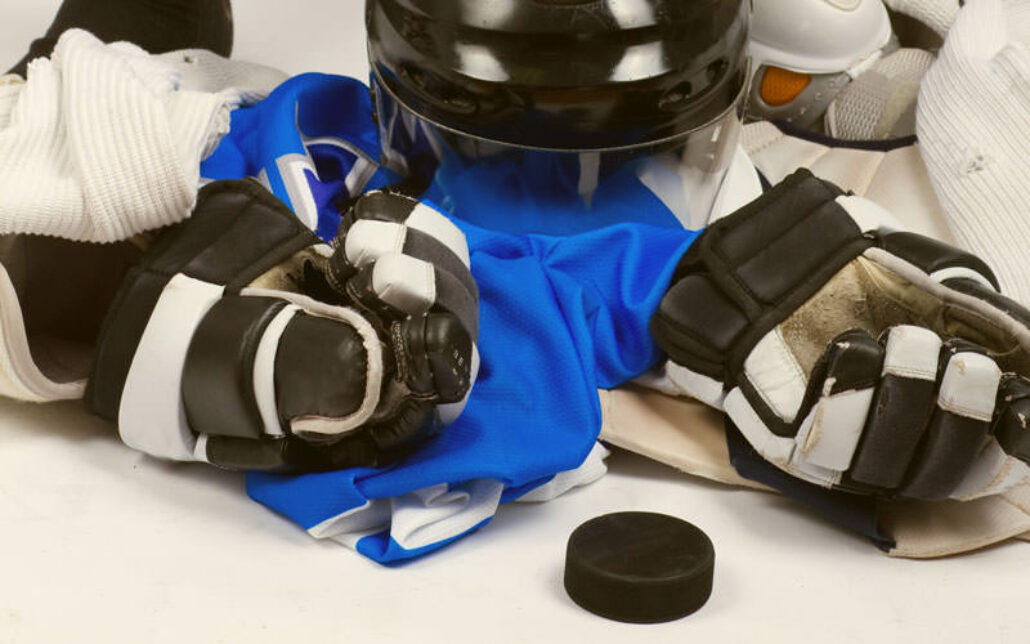Many consider ice hockey a dangerous sport, but statistics show that youth hockey is very safe—when played with the proper equipment. Whether an athlete is a beginner or a seasoned pro, we have a checklist of the protective gear needed to reduce and prevent injuries.
Ice hockey is one of the most popular and fastest-growing youth sports in the country. Boys and girls are enthusiastically donning helmets and lacing up skates to hit the ice. The action on the ice moves quickly, and collisions are part of the game—which means protective gear is a must. We have a list of the equipment your hockey player needs.
This is a sport where players move fast and collide frequently, so specially designed equipment is a must. Here’s a list of the protective gear your player will need:
- A helmet with an optional face cage or visor to protect the head.
- A mouthguard to protect teeth during collisions. Guards can be purchased in standard sizes or can be custom molded to make speaking easier.
- A padded neck guard designed to resist punctures by a puck or skate blade.
- Shoulder pads and a chest protector to protect the chest, ribs, solar plexus, spine, and shoulders during collisions with other players or a flying puck.
- Elbow pads to protect the elbow and forearm from bruises and fractures.
- Protective gloves are designed with a thin layer of leather over the palm and fingers, padding to protect the outside of the hands, and reinforcement to prevent thumbs from being bent backward.
- A hockey jersey to identify the player.
- Heavily padded shorts and pants to protect the thigh, pelvis, hip, and tailbone.
- A jockstrap or pelvic protector to shield the genitals.
- Shin guards to protect the knee joint and frontal bones of the leg.
- Hockey socks are a stocking without a foot, and are a required part of the uniform according to USA Hockey rules.
- Hockey skates with a thick layer of protective leather or nylon and blades that are rounded on both ends for agile maneuvering.
Goaltenders wear bulkier, specially designed versions of safety equipment, constructed to protect them from repeated hits from the puck. In addition to reinforced versions of the protective gear listed above, they need these additional items:
- Goalie mask or helmet and wire face mask designed to withstand high-speed blows from pucks.
- A throat protector and/or padded neck guard to prevent injury by pucks and skate blades.
- A blocker is a glove worn on the player’s stick-wielding hand; it is used to deflect shots.
- A catch glove is worn on the other hand and is designed to trap the puck on the ice or catch a puck in the air.
- Goal pads are worn over the legs and extend from the top of the skate over the knee to protect the knee joint.
- Goalie skates with low blades and squared ends to provide the stability needed to play this position.
For the best protection, it is important to choose safety gear that fits properly. With the right equipment, thorough training, and respect for game rules and regulations, your hockey player can safely enjoy the thrill of one of Minnesota’s favorite sports.
Summit Orthopedics offers comprehensive sports medicine expertise
From Olympians to pro athletes to kids in youth sports and those that just want to be more active—Summit Orthopedics delivers expert care by fellowship-trained sports medicine physicians. If you are recently injured or concerned about ongoing pain, Summit Orthopedics sports medicine specialists have the expertise to evaluate your discomfort and develop a plan to quickly and safely help you get back to being active.
Start your journey to stronger, healthier athletic condition. Find your sports medicine expert, request an appointment online, or call us at (651) 968–5201 to schedule a sports medicine consultation.
Summit has convenient locations across the Minneapolis-St. Paul metro area, serving Minnesota and western Wisconsin. We have state-of-the-art centers for comprehensive orthopedic care in Eagan, MN, Vadnais Heights, MN, Plymouth, MN, and Woodbury, MN, as well as several additional community clinics.
